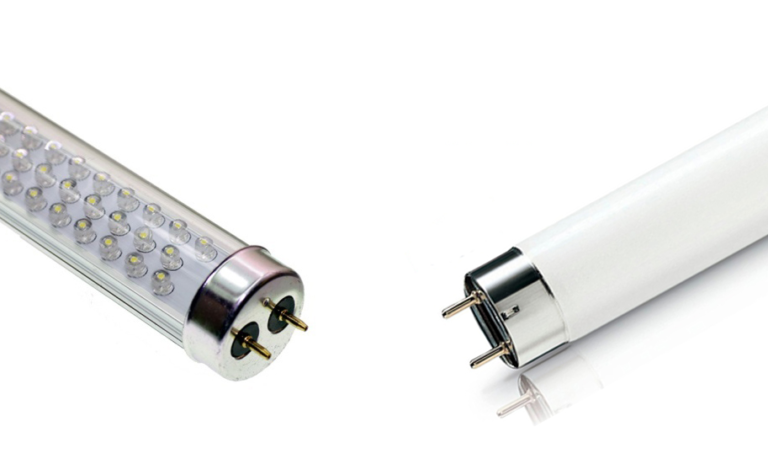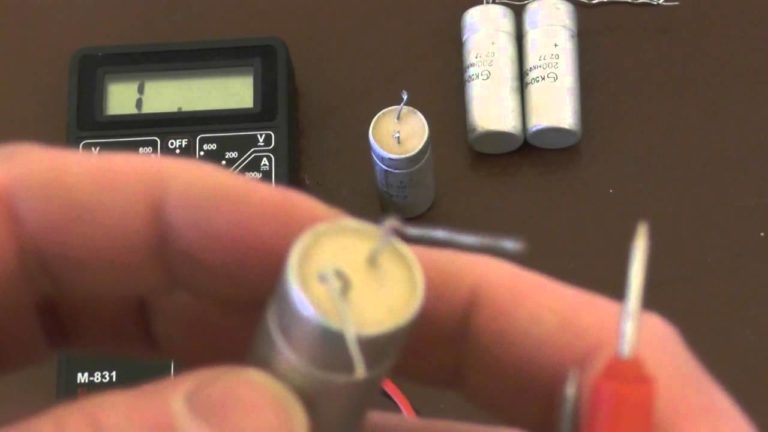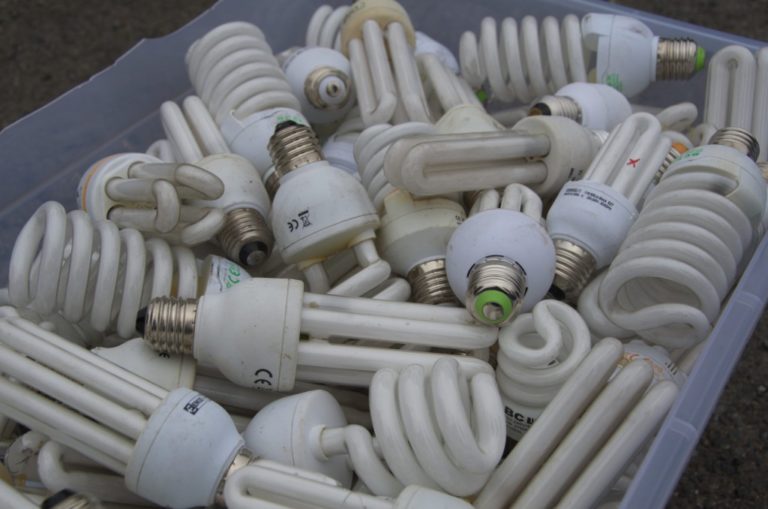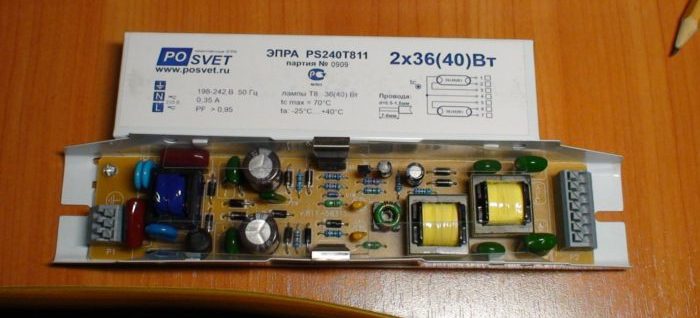EBs for fluorescent lamps
One of the main elements of a large number of lighting fixtures is a ballast, denoted by the abbreviation ECG. The component has features that it is better to know before connecting it to the luminaire. Let's take a look at the diagram of an ECG.
What is an ECG
An ECG is an electronic ballast that greatly extends the life of lighting fixtures and makes them operate more efficiently. The component is a module with contacts to which the input voltage terminals are connected, as well as the load in the form of lamps.
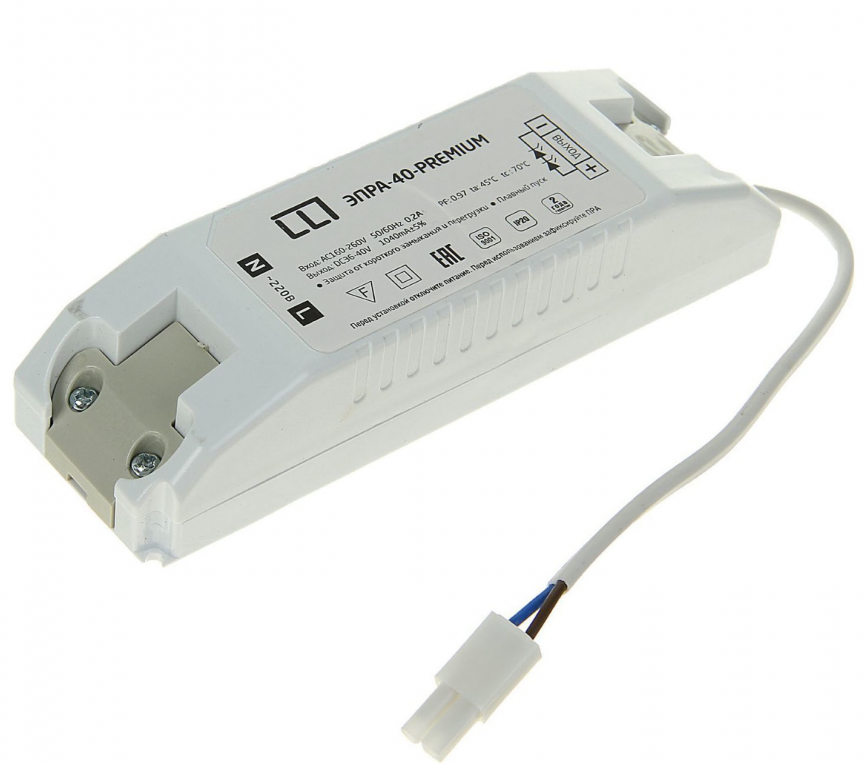
The ECG unit has become an effective replacement for obsolete stabilizers using chokes and starters. It is the electronic module installed in all modern devices.
Advantages and disadvantages
Considering the electronic control gear, it is possible to highlight some features. There are both advantages that set the unit apart from its competitors, as well as disadvantages.
Pros:
- The use of ECG in connection schemes fluorescent lamps significantly prolongs the service life of the elements.
- High efficiency, losses during operation are minimized due to the lack of a choke.
- Power saving.
- No surges or interference in the power supply or connected equipment.
- The luminaire operates stably without pulsations.
- In case of lamp failure, the system immediately stops supplying voltage to the contacts.
- The electrodes heat up smoothly, without sudden jumps or temperature variations.
- Even severe voltage fluctuations in the mains supply do not affect the stability of the luminous flux.
- Some models can operate on direct current.
- Provides reliable protection against short circuit or breakdown.
- In the process of operation, the circuit does not emit any extraneous sounds.
- With EBs, it is possible to run a lighting device even at low temperatures.
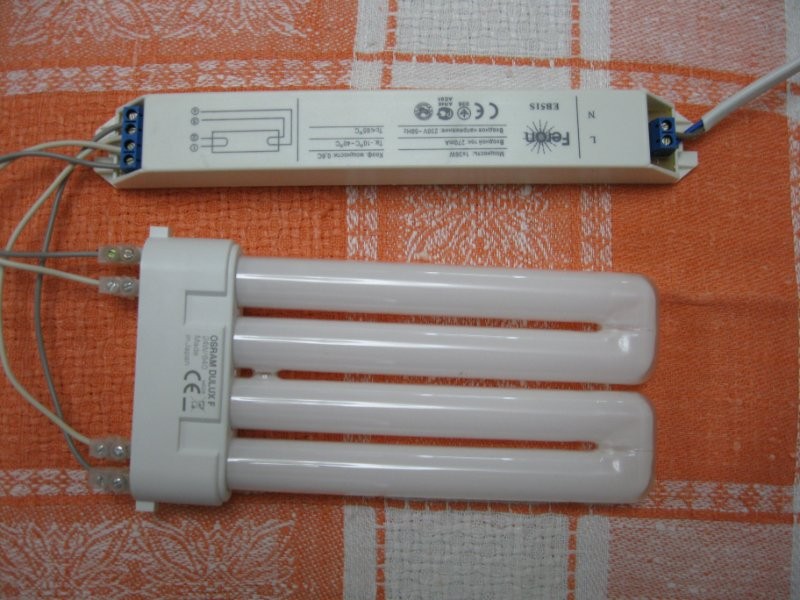
Not without disadvantages:
- There are a lot of cheap low-quality devices on sale with a short service life.
- Good-quality models are expensive.
- A large part of the models can not be used with LED lamps.
Construction and principle of operation of ECG
Any electronic ballast consists of elements:
- a device for rectifying the current;
- electromagnetic radiation filter;
- power factor correction unit for the circuit;
- a voltage smoothing filter;
- inverter
- Choke or ballast for the lamps.
The design can be bridge or half-bridge. The first variant has improved characteristics and is used in high-power luminaires, from 100W. The circuitry effectively maintains the luminescence performance and the voltage supplied to the cathodes.
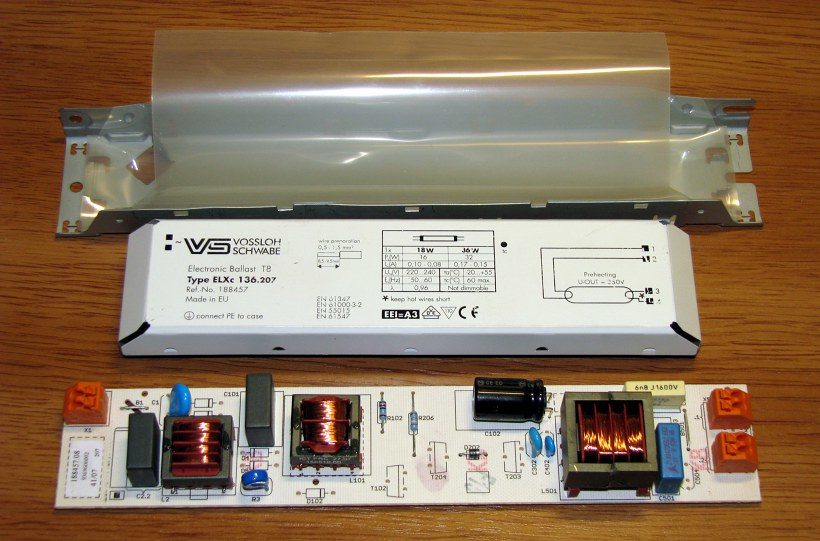
Half-bridge circuits are more popular, as they are suitable for most household fluorescent lamps up to 50W. Designs with the marking 2x36 support connection of two lamps of 36 V.
The operation of the device consists of steps:
- Switching on and preheating the filaments. This is an important manipulation that significantly extends the life of the light sources. Without preheating, the luminaire will not turn on at low temperatures.
- Generation of a high-voltage impedance pulse with a voltage of about 1.5 kV, which causes a breakdown of the gas medium inside the bulb and triggers the glow.
- Stabilization of the voltage and keeping it at the required level. The voltage to support combustion is small, making the circuit safe.
Old-style electromagnetic device
For a long time, the circuits used electromagnetic units that regulate the performance of the glow. They were quite effective, but were characterized by high sensitivity to voltage fluctuations and bulky size.
The old-style module consisted of two components: a choke and a starter. The choke was responsible for the load and voltage reduction, the starter formed the discharge.
A choke as a ballast took up a lot of space and did not allow for compact light sources.
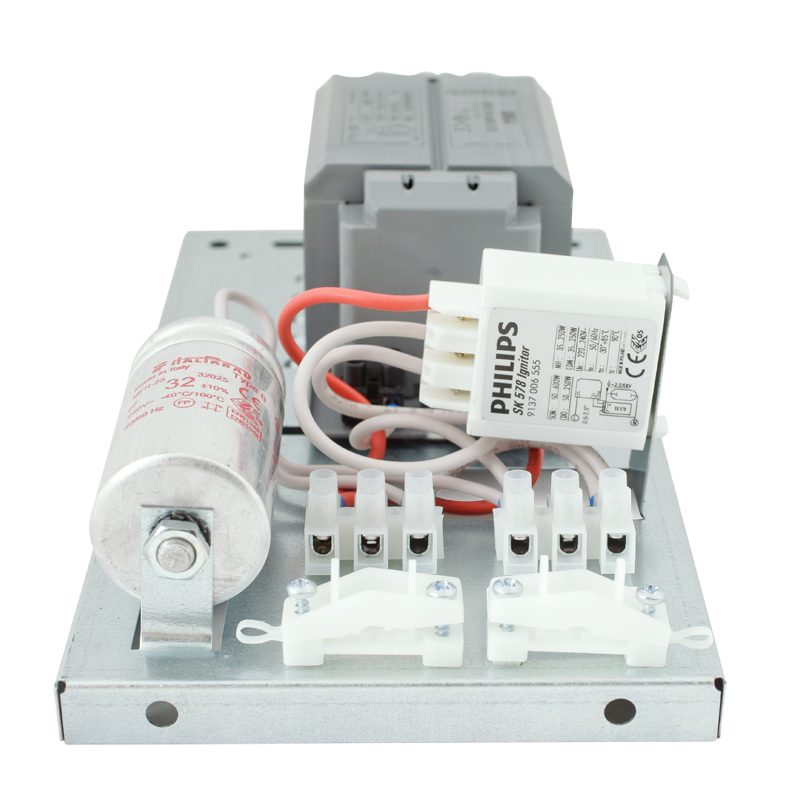
The circuit included one or two starters. The quality and efficiency of the starters depended on the longevity of the lamp. Malfunctions in the starter caused false start and significant overcurrent.
One of the disadvantages of the old-style ballasts can be considered the flicker strobing effect. The pulsations of light negatively affected human vision and caused discomfort.
Significant energy losses were present, reducing the efficiency of the lamp.
Improving the design to ECG
Improved design of the ballast for fluorescent lamps started to be mass integrated into electronic circuits about 30 years ago.
The new device was a complex of semiconductor devices, more compact than traditional circuits. At the same time the quality of voltage stabilization rose to a higher level.
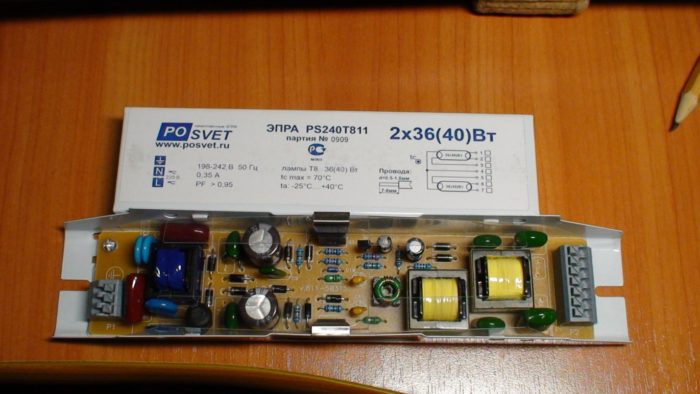
Electromagnetic regulators were replaced by more advanced semiconductor components, with the help of which it is possible to precisely regulate the glow parameters.
Wiring diagram
EBs have become an effective replacement for traditional circuits with reactors and starters, reducing the design of the luminaire and increasing the possibilities.
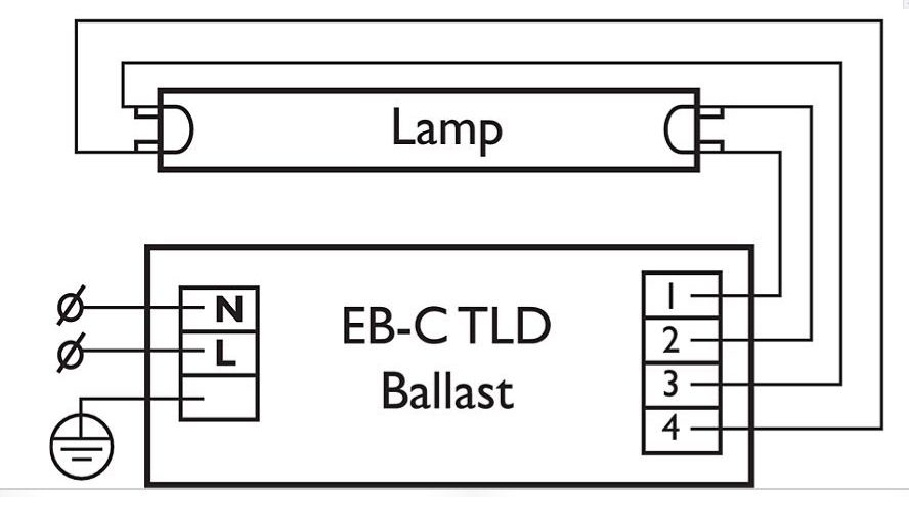
All the disadvantages of EBs with chokes are eliminated. One EB can connect more than one lamp, and with some models up to four lamps, without additional elements. The design works with standard light sources of 18W, 36W, etc.
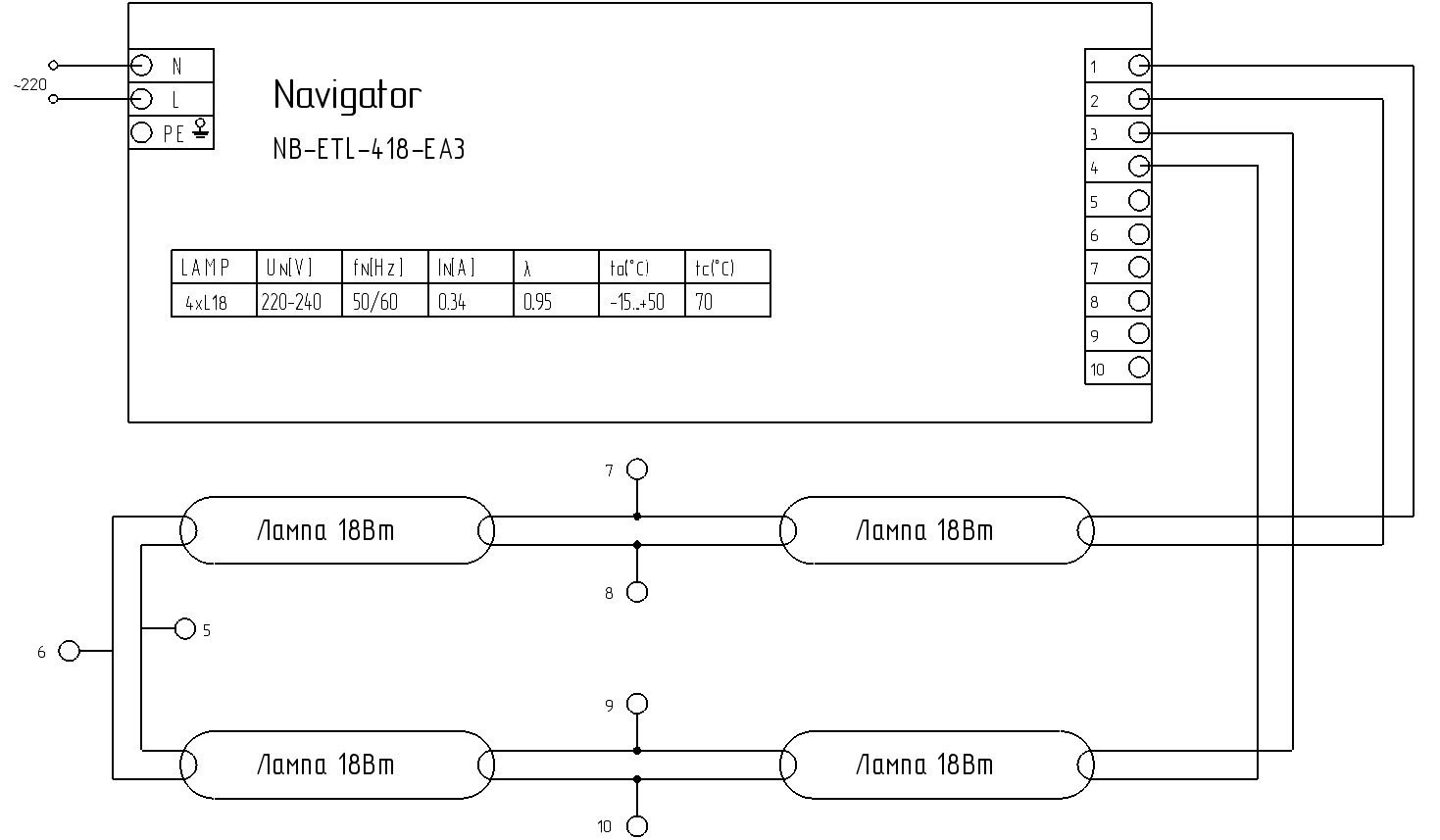
It is better to put the unit on a phase wire. In the presence of zero potential the potential is maintained, which is indicated by a slight flicker of the light source when the power is turned off. This phenomenon is characteristic of cheap ballasts.
To smooth out the flicker, the capacitor is shunted with a resistor with a resistance of 100 kOhm.
Repair of ECG
If ECG stopped working, You can do it yourself. You need a basic knowledge of electronics and a multimeter to measure the parameters.
If you are not confident in your skills, you have to replace the ECG completely. You can go to a repair shop.
It is not easy to fully describe the repair process, but some features of the process stand out.
Any repair begins with an inspection of the existing board. Burned out elements are usually visible by black marks. The bodies of the parts are darkened, the board at the point of failure may be darkened. It is especially important to pay attention to the current-carrying tracks, the presence of foreign shades indicates a lack of contact.
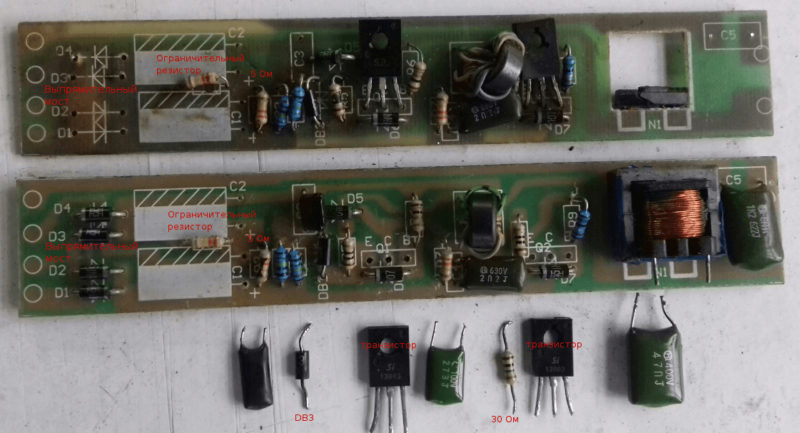
First the fuse is checked, marked with the letter F and numbers. Then the capacitors are examined. If the element is blown or deformed, it must be replaced. Use capacitors with a voltage no less than that indicated on the old one. Leave the capacitance the same. When installing, observe the polarity, failure to do so will result in damage to the element when voltage is applied.
Topical video: Pretty quick and easy way to check if the ECG is working after a repair
All diodes and transistors on the board should be carefully ...carefully test all diodes and transistors on the board with a multimeter.. There should be no breakdowns. All contacts should be tested without any distinctive beeping.
Masters say that the repair of the ballast is justified only when replacing a single element. If there is more damage, it is better to buy a new unit. It's easier, and sometimes cheaper.
